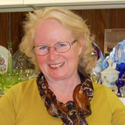Speaking of Antiquing – August 2016
Wedgwood is more than the collector’s passion it has been for over 250 years, and its creator is more than a mere potter. It is part of history.
Josiah Wedgwood was born into a pottery-production family, and was apprenticed in his youth, and partnered in his young adult years with some of the most renowned potters of the age.
When he was able to purchase his own factory in Etruria, England, he had perfected many techniques and was ready to begin something new. He had devised a new way of making clay into blocks, and aging it to create a piece of pottery that felt like porcelain. This became known as “Jasperware.”
The beauty of his wares earned him a commission from Queen Charlotte, after which he was appointed “Potter to the Queen” in 1763. Later, Queen Charlotte granted permission for him to publically market “Queen’s Ware” and that’s what led him to worldwide fame!
Wedgwood was an innovator and an inventor, as well. He required portion control from his workers, even reusing the tiniest scrap of clay, which was uncommon in that era. He created the first heat-controlling system for his large kilns, inventing the kiln thermometer in the process.
It took him thousands of samples before he was happy with the Portland Blue that became his signature color, now known as “Wedgwood Blue.”
Dating Wedgwood has become challenging for collectors, but there was a system. Some of the code has been lost to history. A series of letters and numbers identified the maker, date, and the decorator so they could get paid.
The original identifier was Wedgewood spelled out with printers’ blocks. Then a wooden stamp was used marking WEDGWOOD in all caps. In the late 1700’s to early 1800’s, lowercase letters were used as well as the date and maker’s code. The comma, or “moustache mark,” appears over or under the WEDGWOOD mark, used from 1795 to 1850. The factory name ETRURIA was added on some pieces in the 1800’s and again in the 1920’s. Between 1891 and 1908, the marks are “Wedgwood,” “England,” with the two words separated. In 1908, due to tariffs, MADE IN ENGLAND was used. “Wedgwood” and “Made in England” are separated and used mainly from 1908-1969.
In 1929, there was a font change to sans serif. 1970 to present shows “Wedgwood Made in England” as single stamp and the circled R, register mark is used.
Josiah Wedgwood did make useful items only. He was commissioned to decorate castles in England, France and Austria, some of which are still occupied to this day. His cameos are extremely rare, and some of the finest ever made.
He took his inspiration from ancient Greek and Roman mythology, relying on his extensive library with illustrations that were meticulously copied to his wares. He applied these designs onto the pottery creating a beautiful raised relief.
The colors of his pottery, ranging from yellow, green, red, to deep black, came from experimentation with mixing various clays and minerals found in England. He guarded these formulas very carefully from his competitors.
The thriving company has been handed down through his family and run with quality and precision like none other for over 250 years. Wedgwood was sold to Waterford Crystal in the late 1980’s and is now owned by Fiskars.
 Margaret Barns is co-owner of Pickety Place Antiques & Collectibles located at 130 N. 4th Street in Jacksonville. LIKE them on
Margaret Barns is co-owner of Pickety Place Antiques & Collectibles located at 130 N. 4th Street in Jacksonville. LIKE them on